 _Tatami / Mats
_Tatami / Mats
A tatami is a type of mat used as a flooring material in traditional Japanese architecture. Tatami mats are traditionally made of a straw core slab with a woven soft rush straw covering. They usually have edging of cloth for decoration and are manufactured in standardized sizes, with aspect ratio of 2:1.
Scale
There are four standardized size tatami, called Danchima, Edoma, Chukyoma,and Kyoma in Japan. Even though tatami is less commonly used in modern housing, it is still widely used as a unit of room size, jo. 6 jo(6 mats) Kyoma is much bigger than 6 jo Danchima, and that’s why it is important to understand the difference between them.
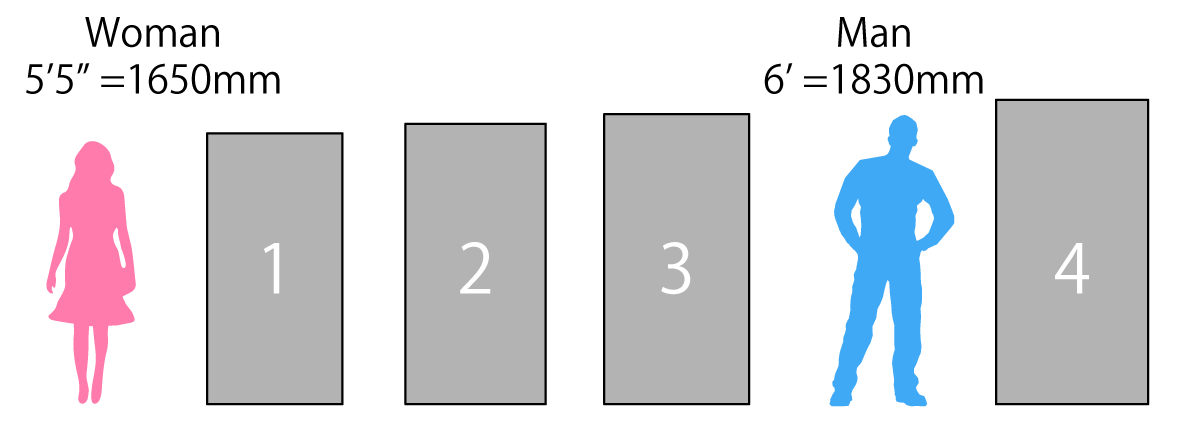
1.Danchima
1700 x 850mm Danchiama sized tatami are the standardized size for public housing projects developed during 1970 and 1980s
2.Edoma
1760 x 880mm Edoma sized tatami are the most commonly used size around Tokyo and beyond.
3.Chukyoma
1820 x 910mm Chukyoma sized tatami are used mainly in around Aichi prefecture.
-
4.Kyoma
1910 x 955mm Kyoma sized tatami are used in the west of Kyoto prefecture.
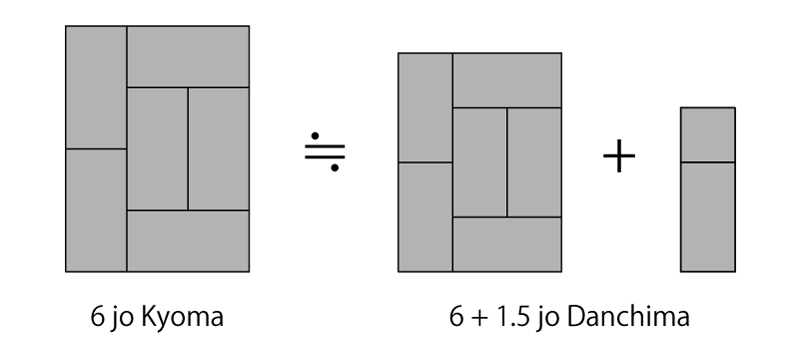
Kyoma vs Danchima
A typcial residential size room(6 jo) can be quite different in size depending on which type of tatami is used. 6 jo in Kyoma is whopping 25% bigger than 6 jo in Danchima. In other words, 6 jo in Kyoma is about 7.5 jo in Danchima.
Design & Style
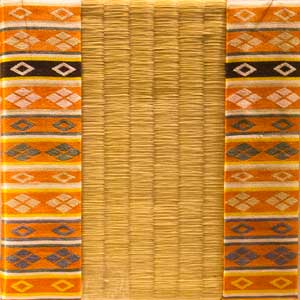
Ungen Beri
It is heighest ranked design designated for rooms, where the emperor, retired emperor, and their wives lived. It is used for tatami in Seiryo-den Hall of Kyoto Imperial Palace.
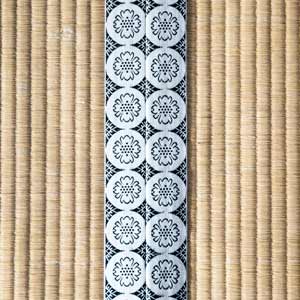
Daimon Korai Beri
This design is used to be designated for princes and cheif advisors, but nowadays, you can see the design widely adopted in temples and shrines
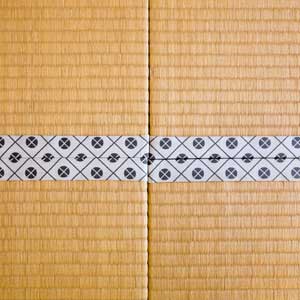
Shomon Korai Beri
This design is used to be designated for high rank officials, but nowadays, you can see the design adopted in temples and shrines
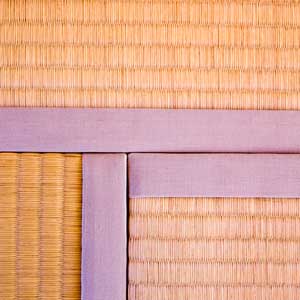
Muji Beri
This is the most commonly used edge design, and it is usually made of synthetic fiber for cost and maintenance reasons.
Layout
It is difficult to perfectly align 4 corners, so in general, layout on the left is preferred unless formal design is required.You almost never see 4 corner layout in residential architecture, while it is not uncommon in formal or main rooms of temples and shrines.
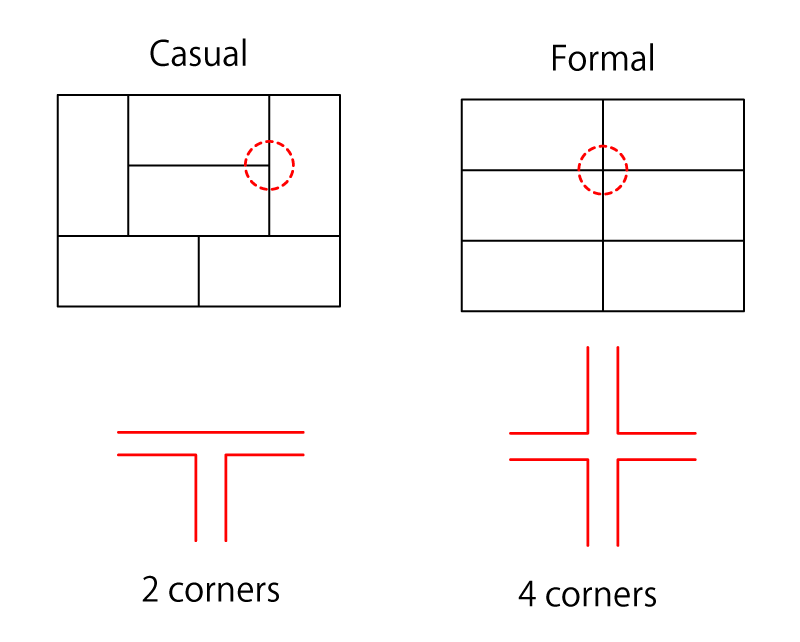
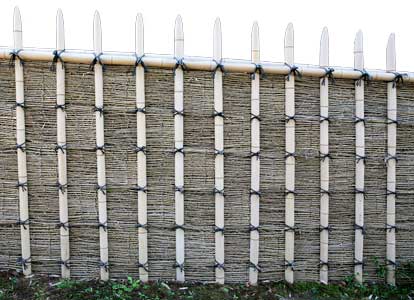 Kaki
Architectural Elements
Kaki
Architectural Elements
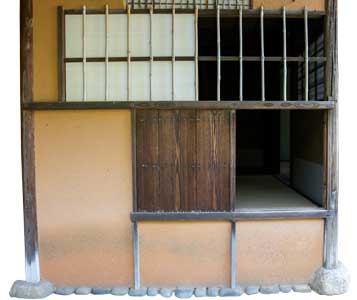 Entrance
Tea House
Entrance
Tea House
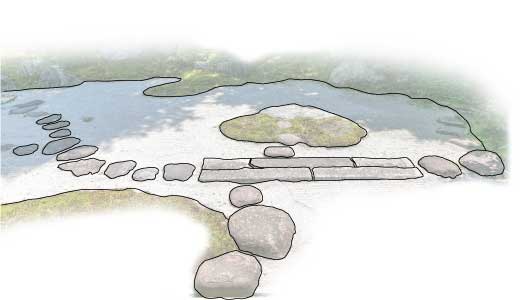 Tobi ishi
Tea House
Tobi ishi
Tea House
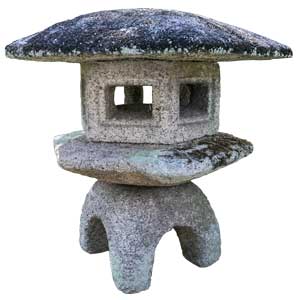 Toro
Tea House
Toro
Tea House
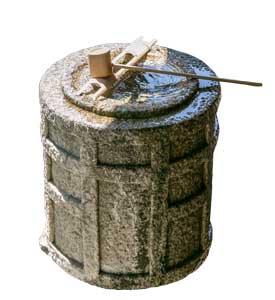 Tsukubai
Tea House
Tsukubai
Tea House
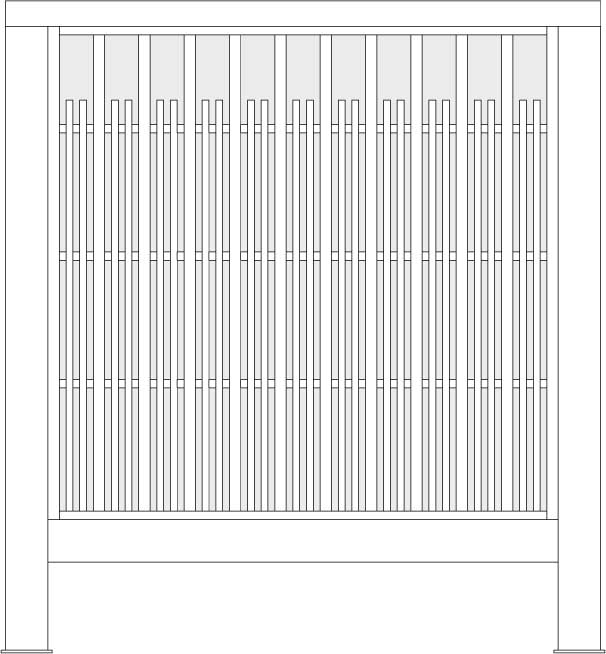 Latticework
Machiya
Latticework
Machiya
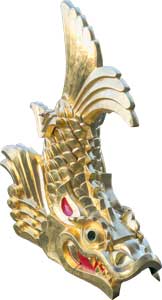 Shachi
Castle
Shachi
Castle
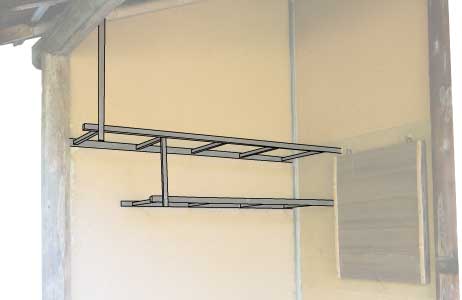 Katanagake
Tea House
Katanagake
Tea House